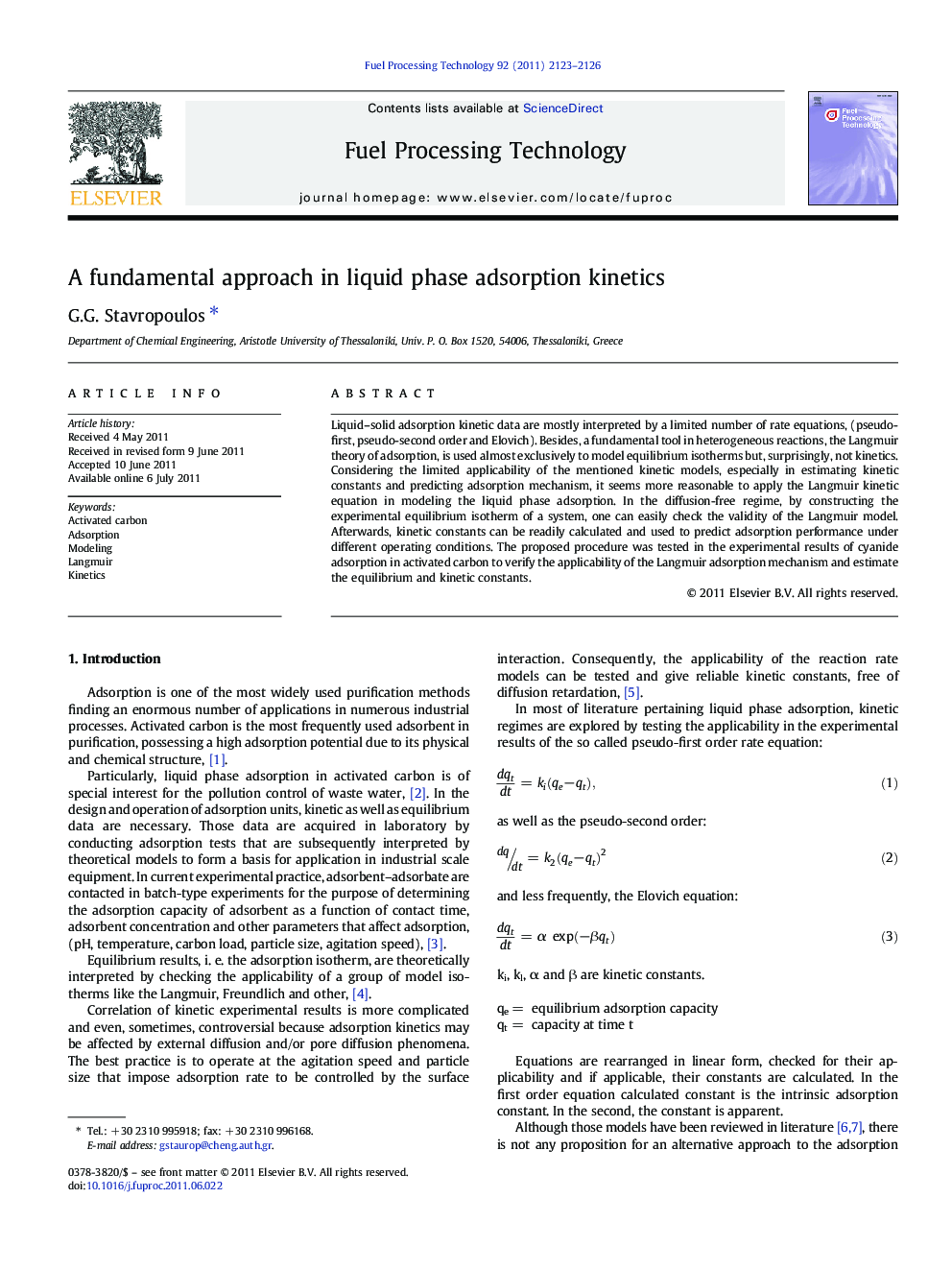| Article ID | Journal | Published Year | Pages | File Type |
|---|---|---|---|---|
| 210600 | Fuel Processing Technology | 2011 | 4 Pages |
Liquid–solid adsorption kinetic data are mostly interpreted by a limited number of rate equations, (pseudo-first, pseudo-second order and Elovich). Besides, a fundamental tool in heterogeneous reactions, the Langmuir theory of adsorption, is used almost exclusively to model equilibrium isotherms but, surprisingly, not kinetics. Considering the limited applicability of the mentioned kinetic models, especially in estimating kinetic constants and predicting adsorption mechanism, it seems more reasonable to apply the Langmuir kinetic equation in modeling the liquid phase adsorption. In the diffusion-free regime, by constructing the experimental equilibrium isotherm of a system, one can easily check the validity of the Langmuir model. Afterwards, kinetic constants can be readily calculated and used to predict adsorption performance under different operating conditions. The proposed procedure was tested in the experimental results of cyanide adsorption in activated carbon to verify the applicability of the Langmuir adsorption mechanism and estimate the equilibrium and kinetic constants.
► The well-known Langmuir model is applied to model liquid phase adsorption kinetics. ► The model is an alternative approach to the, up to now, used kinetic models. ► The model was successfully applied in cyanide adsorption in activated carbon but can also be applied to model kinetics of other adsorption interactions, not yet tested.
